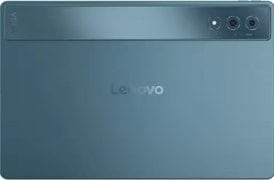- Home
- Science
- Science News
- CSIRO Uses Quantum AI to Revolutionize Semiconductor Design
CSIRO Uses Quantum AI to Revolutionize Semiconductor Design
CSIRO's quantum-enhanced AI model boosts chip design accuracy using only 5 qubits, outperforming classical methods in predicting GaN transistor properties.

Photo Credit: Advanced Science (2025)
CSIRO have achieved a world-first demonstration of quantum machine learning in semiconductor fabrication
Researchers at Australia's CSIRO have achieved a world-first demonstration of quantum machine learning in semiconductor fabrication. The quantum-enhanced model outperformed conventional AI methods and could reshape how microchips are designed. The team focused on modeling a crucial—but hard to predict—property called “Ohmic contact” resistance, which measures how easily current flows where metal meets a semiconductor.
They analysed 159 experimental samples from advanced gallium nitride (GaN) transistors (known for high power/high-frequency performance). By combining a quantum processing layer with a final classical regression step, the model extracted subtle patterns that traditional approaches had missed.
Tackling a difficult design problem
According to the study, the CSIRO researchers first encoded many fabrication variables (like gas mixtures and annealing times) per device and used principal component analysis (PCA) to shrink 37 parameters down to the five most important ones. Professor Muhammad Usman – who led the study – explains they did this because “the quantum computers that we currently have very limited capabilities”.
Classical machine learning, by contrast, can struggle when data are scarce or relationships are nonlinear. By focusing on these key variables, the team made the problem manageable for today's quantum hardware.
A quantum kernel approach
To model the data, the team built a custom Quantum Kernel-Aligned Regressor (QKAR) architecture. Each sample's five key parameters were mapped into a five-qubit quantum state (using a Pauli-Z feature map), enabling a quantum kernel layer to capture complex correlations.
The output of this quantum layer was then fed into a standard learning algorithm that identified which manufacturing parameters mattered most. As Usman says, this combined quantum–classical model pinpoints which fabrication steps to tune for optimal device performance.
In tests, the QKAR model beat seven top classical algorithms on the same task. It required only five qubits, making it feasible on today's quantum machines. CSIRO's Dr. Zeheng Wang notes that the quantum method found patterns classical models might miss in high-dimensional, small-data problems.
To validate the approach, the team fabricated new GaN devices using the model's guidance; these chips showed improved performance. This confirmed that the quantum-assisted design generalized beyond its training data.
Get your daily dose of tech news, reviews, and insights, in under 80 characters on Gadgets 360 Turbo. Connect with fellow tech lovers on our Forum. Follow us on X, Facebook, WhatsApp, Threads and Google News for instant updates. Catch all the action on our YouTube channel.
Related Stories
- Samsung Galaxy Unpacked 2025
- ChatGPT
- Redmi Note 14 Pro+
- iPhone 16
- Apple Vision Pro
- Oneplus 12
- OnePlus Nord CE 3 Lite 5G
- iPhone 13
- Xiaomi 14 Pro
- Oppo Find N3
- Tecno Spark Go (2023)
- Realme V30
- Best Phones Under 25000
- Samsung Galaxy S24 Series
- Cryptocurrency
- iQoo 12
- Samsung Galaxy S24 Ultra
- Giottus
- Samsung Galaxy Z Flip 5
- Apple 'Scary Fast'
- Housefull 5
- GoPro Hero 12 Black Review
- Invincible Season 2
- JioGlass
- HD Ready TV
- Laptop Under 50000
- Smartwatch Under 10000
- Latest Mobile Phones
- Compare Phones
- Redmi Note 15 5G
- Redmi Note 15 Pro 5G
- Redmi Note 15 Pro+ 5G
- Lava Play Max
- Poco C85 5G
- Honor Magic 8 Lite
- Jolla Phone
- Realme P4x 5G
- Asus ProArt P16
- MacBook Pro 14-inch (M5, 2025)
- OnePlus Pad Go 2
- Poco Pad M1
- Just Corseca Skywatch Pro
- Honor Watch X5
- Acerpure Nitro Z Series 100-inch QLED TV
- Samsung 43 Inch LED Ultra HD (4K) Smart TV (UA43UE81AFULXL)
- Asus ROG Ally
- Nintendo Switch Lite
- Haier 1.6 Ton 5 Star Inverter Split AC (HSU19G-MZAID5BN-INV)
- Haier 1.6 Ton 5 Star Inverter Split AC (HSU19G-MZAIM5BN-INV)
-
 Lyne Lancer 19 Pro With 2.01-Inch Display, SpO2 Monitoring Launched in India
Lyne Lancer 19 Pro With 2.01-Inch Display, SpO2 Monitoring Launched in India
-
 OpenAI and Disney Reach Licensing Agreement to Bring Its Characters to the Sora App
OpenAI and Disney Reach Licensing Agreement to Bring Its Characters to the Sora App
-
 Motorola Edge 70 Ultra Key Specifications, Colourways Tipped; Might Launch With 50-Megapixel Camera
Motorola Edge 70 Ultra Key Specifications, Colourways Tipped; Might Launch With 50-Megapixel Camera
-
 Vivo S50 and Vivo S50 Pro Mini Spotted on China Telecom Website Ahead of December 15 Launch
Vivo S50 and Vivo S50 Pro Mini Spotted on China Telecom Website Ahead of December 15 Launch











